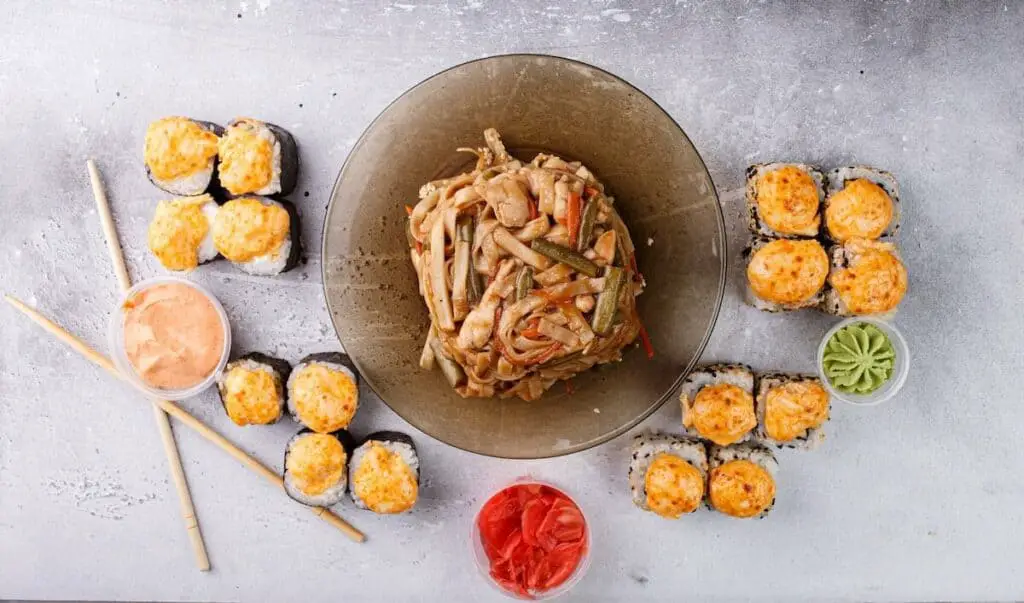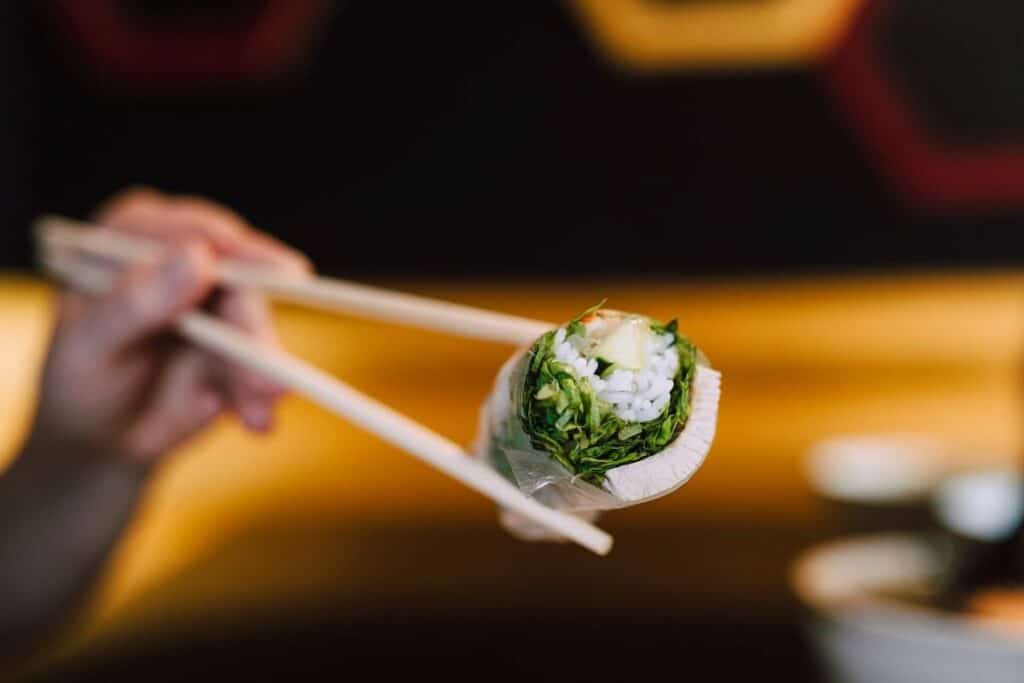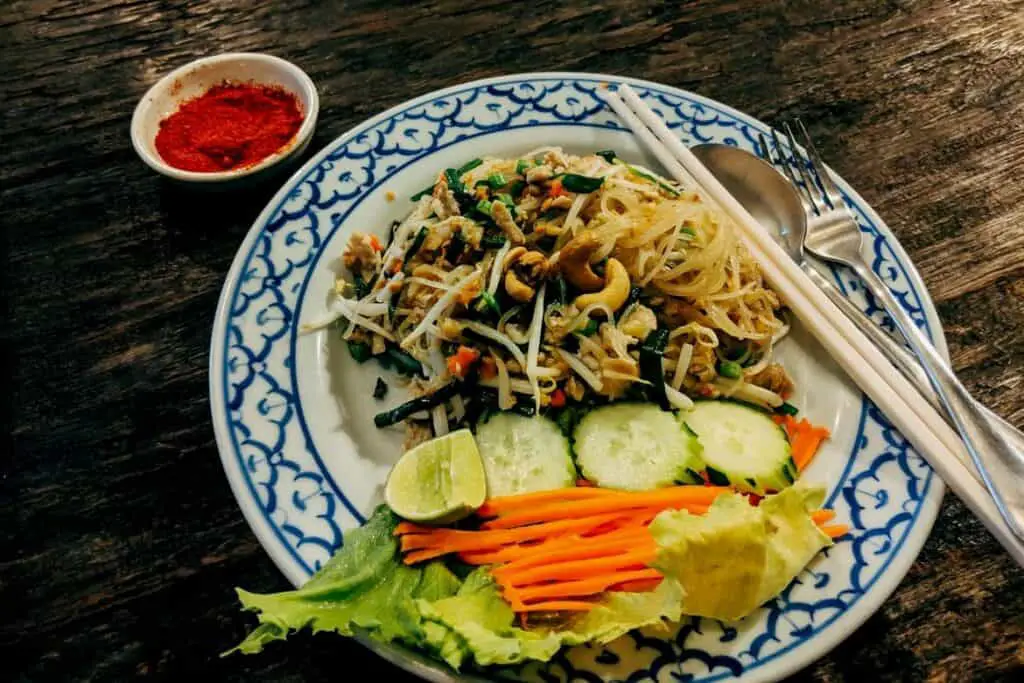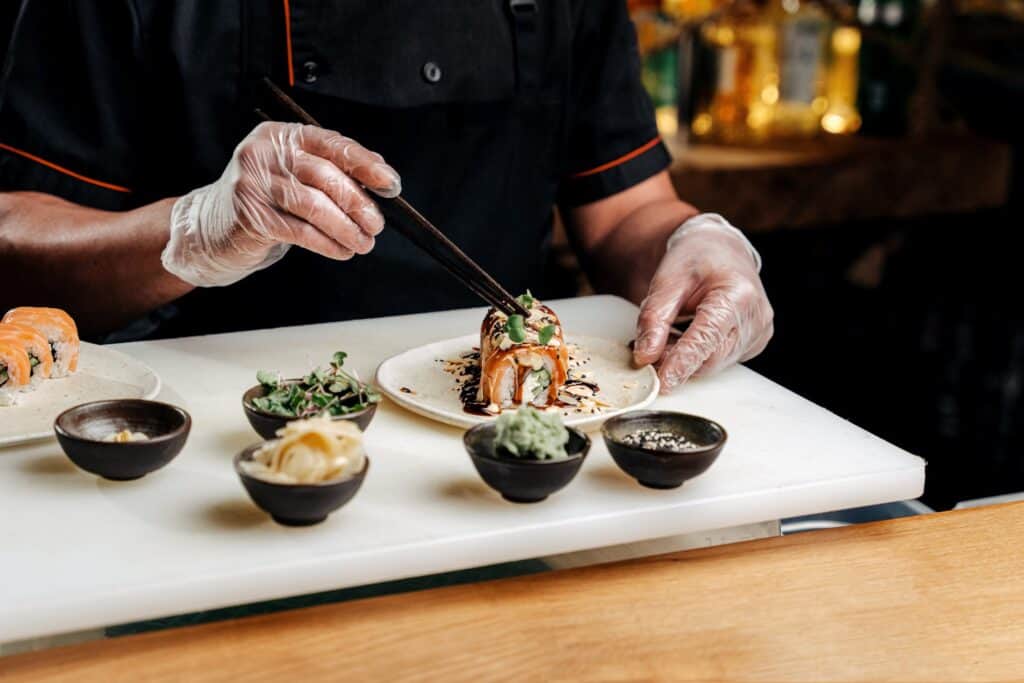Thai cuisine has many delicacies and dishes that have taken over the global food market. Imagining a world without pad thai or tom yum soup is impossible, but have they ever ventured into making sushi, and if they have, what is Thai sushi? Learn more about this fusion dish here.
Thai sushi is made mainly with Thai ingredients, such as spices and spicy sauces, seafood, vegetables, and fruits. However, it’s not that different from American sushi such as Alaska and California rolls; it’s a twist on the traditional Japanese dish popular in restaurants worldwide since the 1800s.


Thai sushi has many ingredients, so if you want to know more about this type of cuisine, this is the article for you.
What Is Thai Sushi and Is It Only Available in Thai Restaurants?
Thai sushi is rolls, nigiri, and other versions of sushi created with typical Thai ingredients – vegetables, fruits, prawns, fish, rice paper, and spices. It’s unique because it’s served primarily in Thai restaurants, but it wouldn’t be impossible to find this kind of sushi in other places, too.
However, a Thai restaurant will most likely be the place to serve Thai sushi because it’d be one of their specialties. It’s a chance to show off their diverse ingredients and cooking skills and present the Thai national cuisine differently.
One way to recognize the influence of Thai cuisine in sushi is rice paper. They use it for spring rolls but very often wrap sushi rolls with it instead of using nori seaweed.
Some Japanese Restaurants May Have Thai Sushi on Their Menus
Thai and Japanese cuisine are very different. While Japanese cuisine relies on simplicity and ingredients with a special umami flavor, Thai cuisine is vivid, spicy, and highly colorful. If you saw a Japanese and Thai dish side by side, you’d be able to tell them apart.
This is why some Japanese sushi restaurants can have Thai sushi rolls, but it’s still unlikely since the ingredients and concepts of both cuisines are different.

Does Thai Cuisine Have Sushi?
Typical Thai cuisine doesn’t ordinarily have sushi since many sources claim it was inspired by Indian cuisine and its use of spices. Their dishes are a mash-up of various ingredients and flavors that weren’t necessarily made into eye-pleasing meals like sushi is.
The sushi available in modern Thai restaurants was inspired by the Japanese creation, except the ingredients may be more elaborate and slightly different from the original recipes.
Thai sushi rolls are more similar to American rolls in terms of ingredient variety and preparation.
Curious to know more about Japanese delicacies? Real also :
What Is Ramen Sushi?
What Sushi Is White?
What Is Chicken Sushi?
What Is Masago?
Is Botan Rice Good For Sushi?
The Most Popular Thai Meals (You’ve Likely Heard Of)
If you love Thai food, you’re likely familiar with all the dishes that make it so famous. Still, here’s a list of some meals that launched Thai cuisine onto the list of the most influential dishes globally:
- Pad Thai – a prominent staple dish made of stir-fried rice noodles with tapioca flour, tamarind juice, fish sauce, shrimp (sometimes chicken, too,) garlic, shallots, chili peppers, and lime; pad thai was voted as one of the World’s 50 Best Foods,
- Tom Yum – a hot Thai soup based on a sour and spicy broth and cooked with shrimp or pork. Other ingredients include spices like lemongrass, galangal, chilies, mushrooms, cilantro, tomatoes, and onions,
- Som Tam – a green papaya salad that combines five essential flavors: sourness (lime,) spiciness (chilies,) saltiness (fish sauce,) and sweetness (palm sugar.) Other ingredients may include dried shrimp, raw Thai eggplant, and asparagus beans,
- Green Curry – the name of this dish comes from the green chilies that give the curry its signature, green color. The base is coconut milk, and other ingredients include fish balls, eggplant, basil, and white vegetables.

What Goes Into Thai Sushi Rolls? Typical Ingredients for This Cuisine
As you can see, the typical Thai ingredients are ordinarily fresh and natural; even the sugar they use is mainly derived from palm trees and not completely refined. This is why Thai sushi rolls may include more items like seafood, peanuts and peanut sauce, green onions, and chilies.
If you don’t like spicy and highly aromatic foods, you may avoid Thai sushi overall. However, if you’re into trying more versatile and flavorful sushi rolls, going to a Thai fusion restaurant will be the best day of your life.
Seafood and Spice Are Essential In Thai Cuisine
Fans of seafood can get their needed fix with the essential Japanese sushi. Asian cuisine is filled with recipes that use spoils of the ocean, from fish to seaweed, but none more than Japanese.
On the other hand, Thai food is a fusion between Southeast Asian and Indian influences. This is why you may find it more aromatic than Japanese cuisine but more potent and slightly confusing in terms of flavor. Whatever your preference may be, you won’t regret trying Thai sushi at a restaurant that serves it.

Enjoying Recipe Variations Should be On Any Sushi Lovers’ Mind
While traditionalists judge any sushi variation and only claim authentic Japanese sushi as the real deal, this dish has evolved into many different things. There’s sushi fusion, deconstructed, and even ramen sushi.
People have come up with amazingly creative ways to make sushi rolls over time, and most have reflected the local ingredients. Since the main ingredient is rice, any other additions that go well together can create the ultimate sushi rolls.
Thai sushi may be a pleasure to eat for many people, so make sure to give it a chance before judging; that is, as long as you’re okay with many flavors and spicy aromas.